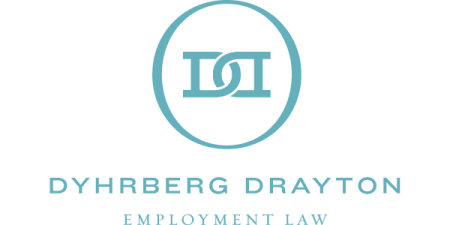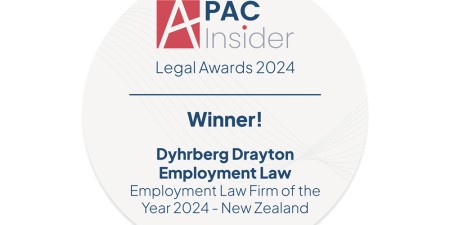The Human Rights Commission has recently released a ground-breaking report into Experiences of Workplace Bullying and Harassment in Aotearoa New Zealand (the Report). Produced by Kantar Public, the Report presents the results of the national survey of New Zealand’s workforce and sheds light on the prevalence of sexual harassment, racial harassment and bullying in the workplace.
The release of this report is timely, with high profile allegations of workplace bullying dominating recent media coverage and given the prevalence of such behaviour and the harm it causes. The report highlights the importance of workplaces having appropriate systems to enable awareness of any bullying, harassment and discrimination in the workplace, the need to promptly address complaints of bullying, or knowledge of poor workplace culture, and take diligent and reasonable steps to prevent unacceptable behaviours from occurring and ensure a safe work culture.
This article sets out the steps employees and employers should take when raising a complaint/responding to one, provides definitions and examples of what constitutes bullying, and provides information regarding the investigation process.
Prevalence of workplace bullying
The Report states 30% of people responding to the survey have experienced workplace sexual harassment and 39% have experienced racial harassment in their workplace in the last 5 years. 40% of workers reported being bullied at some point in their working life. These figures were reportedly higher for many intersectional groups, including Tangata Whenua, ethnic communities, LGBTQIA+, disabled people and women.
The Report also noted only a small number of participants who were victims of these behaviours raised a formal complaint, and of those who did, a large proportion were dissatisfied with the outcome to their complaint.
Under the Health and Safety at Work Act 2015 (HSWA) businesses are required to manage health and safety risks arising in their workplace as far as is reasonably practicable. This includes physical and psychological risks arising from bullying and harassment.
What is bullying and harassment?
There is no legislative definition of bullying. Bullying is defined by Worksafe New Zealand as ‘repeated and unreasonable behaviour directed towards a worker or a group of workers that can lead to physical or psychological harm. Repeated behaviour is persistent (occurs more than once) and can involve a range of actions over time. Unreasonable behaviour means actions that a reasonable person in the same circumstances would see as unreasonable. It includes victimising, humiliating, intimidating or threatening a person. Bullying may also include harassment, discrimination or violence’.
A single incident of unreasonable behaviour is not considered workplace bullying, but it could escalate into bullying and should not be ignored. A single incident of unreasonable behaviour may also be considered misconduct, which could lead to disciplinary action.
Bullying can be direct or indirect, personal, or aimed at a group. It does not require intent or need to be deliberate. It is not limited to situations where there is a power imbalance such as managers targeting staff. It can occur outside of normal work hours and be carried out in a variety of ways including through email, text messaging, or social media channels.
The Employment Relations Act 2000 (the ERA) and Human Rights Act 1993 set out the definitions of racial and sexual harassment. In summary, s 109 of the ERA defines an employee being racially harassed as when an employer uses language (whether written or spoken), visual material, or physical behaviour that directly or indirectly expresses hostility against, or brings into contempt or ridicule, the employee on the ground of the race, colour, or ethnic or national origins of the employee; and is hurtful or offensive to the employee (whether or not that is conveyed to the employer or representative); and has, either by its nature or through repetition, a detrimental effect on the employee’s employment, job performance, or job satisfaction.
Sexual harassment of an employee is defined at s 108 of the ERA as when the employee’s employer or a representative of that employer directly or indirectly makes a request of that employee for sexual intercourse, sexual contact or other form of sexual activity; which contains an implied or overt promise of preferential treatment, or an implied or overt threat of detrimental treatment or present or future employment; by language, visual material, or physical behaviour, of a sexual nature, that is unwelcome or offensive to the employee (whether or not that is conveyed to the employer or representative) and has a detrimental effect on the employee’s employment, job performance or job satisfaction.[1]
Raising and responding to complaints
If an employee feels they are being bullied or harassed, they should discuss these concerns as soon as possible with their manager or HR advisor, or the organisation may use an independent channel for complaints. Following that discussion, it is up to the employee to decide whether they would prefer to take steps to resolve the matter informally in the first instance or alternatively raise a formal complaint. The employer may decide to run a formal process if the matter is very serious and requires formal intervention.
Informal resolution
Informal resolution may be appropriate in situations where the complainant feels they are able and safe to deal with the problem themselves (with appropriate support), or if they prefer another method of resolution that stops short of making a formal complaint. Informal resolution enables low level resolution.
It can also give the respondent an opportunity to correct their behaviour which may be better for the parties’ ongoing workplace relationship. An example of taking an informal approach may include telling the person their behaviour is offensive, calling out inappropriate comments and asking them to stop, or even a facilitated conversation.
Informal resolution will not always be appropriate, for example circumstances where the behaviour is serious or if there is a possibility the person complained about will respond aggressively. It is important that any person making a complaint feels well supported and able to withdraw from the process at any point or escalate it to a formal complaint.
Formal complaint
A formal complaint process may be appropriate in situations where informal resolution is not the complainant’s preferred option, is inappropriate because of the nature or severity of the issue, is unsafe or an informal approach failed to resolve the problem.
A formal complaint will ideally be made in writing, so there is a clear record of concerns but does not have to be. It can be reported with an appropriate person taking an accurate record. It does not need to be called a ‘complaint’ to be treated as one, though the complainant’s intentions should be clarified. This formal complaint should be raised with the employee’s manager, or if this is not appropriate in the circumstances then human resources or health and safety representative, union or lawyer. The employer should have a complaints policy which sets out the pathways.
Any formal complaint received should be treated as serious and responded to accordingly. Following receiving a complaint, it should be assessed on a case-by-case nature to assess what is the most appropriate and reasonable course of action to take. The complaint should be kept as confidential as possible, so not to compromise any investigation (and allowing for natural justice/fairness requirements). Complaints may also be made in appropriate cases to external agencies such as Worksafe or the Police.
Investigation process
All investigations must be impartial and fair to all the parties involved. All parties should be kept informed of the process and up to date throughout. It may be appropriate to engage an independent external investigator depending on the nature of the complaint.
An investigation must meet procedural fairness requirements, including as detailed in any relevant misconduct or disciplinary investigation policies. This means the respondent must be informed of the allegation against them (usually including who the complainant is), their right to representation and a support person, and the possible consequences if the allegations are upheld.
The investigator must also ensure that all relevant matters are put to the respondent, so they have a full opportunity to respond to the allegations. The complainant and any other participants need to be informed of the process and the way any information will be used/shared.
Employers should also consider what processes need to be put in place to keep the workplace safe while the investigation is happening, such as working from home or potential suspension (following a fair process). Staff involved in the investigation should be offered support, such EAP, and be aware of their right to representation and ability to bring a support person to any interview.
Specific types of complaints may have their own legal requirements, such as protected disclosures commonly known as a whistle-blower complaint.
After an investigation
Everyone involved in a formal process will need support throughout it and afterwards. There will usually be a need for careful, safe conversations or meetings to ensure people are not experiencing distress and can work together safely.
Even if an investigation has concluded bullying or harassment did not occur, it is always a good idea to remind staff about what types of behaviour are considered acceptable.
If an investigation concludes bullying or harassment did occur, the employer must take reasonable steps to ensure that the unacceptable behaviour ceases immediately, and the workplace is safe. The complainant should be kept in the loop and understand the general outcome (without detailed specifics to maintain privacy) and should be protected from retaliation or disadvantage for having complained.
It is important to also take steps to ascertain how the behaviour was able to occur. Employers may need to take steps to improve the culture of their workplace. This can include training of managers and staff in what type of behaviours are acceptable and proactive actions to improve workplace culture. This takes time and must continually be strived for. It is recommended to consult with the complainant to understand what steps they feel need to be taken, to stop the same behaviours from occurring in the future.
Employers also need to be aware that depending on the type of behaviour, a staff member may not feel comfortable raising a complaint or participating in an investigation process. Statistically, few people who are subjected to sexual harassment feel able to confront the behaviour or make a complaint. Often this is because people lack confidence in processes and outcomes. They may have heard others say nothing happened when they raised a similar issue, or seen how complainants are victimised, and stories in the media with people saying the process was worse than the sexual assault. To mitigate against this, workplaces should have a culture and system in place to empower people to have safe conversations with measures implemented to prevent unacceptable behaviour, support healthy relationships, and monitor the situation to make sure it doesn’t happen again.
At any point in the process, any person involved has the right to seek advice from, and be a represented by, a lawyer, advocate, or their union delegate. Worksafe also provides a number of helpful resources including short essays on mentally healthy work, which can be accessed here.
If you want to know more about your legal rights and obligations, wish to put in place appropriate policies, have received a complaint of bullying, or wish to make a complaint, we can assist you.
[1] The Human Rights Act 1993 sets out a similar definition for sexual harassment; however it applies to a wider category of people, not just employees as covered by the Employment Relations Act 2000.



